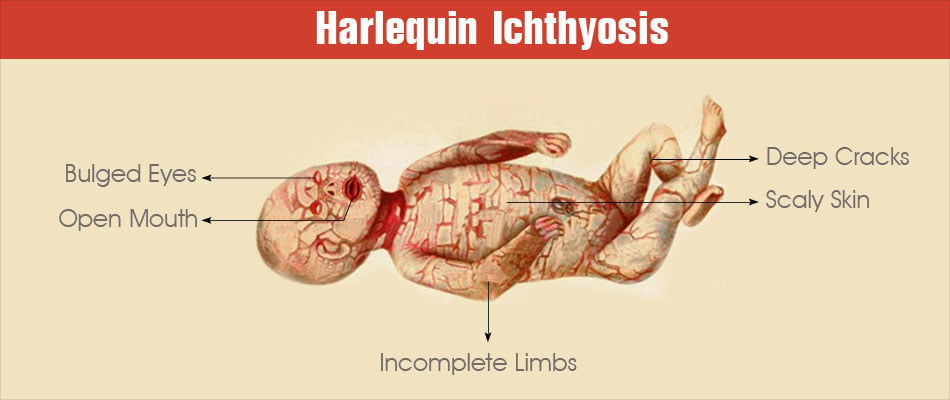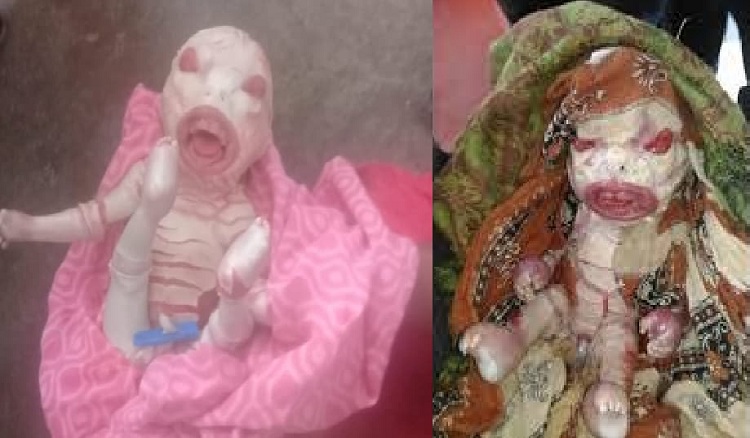Harlequin ichthyosis is a very rare type of genetic disorder that leads to deformities in the skin of babies and infants. The disease is diagnosed at birth based on the child’s physical appearance.

Credits: Med India
A “harlequin fetus” will have symptoms of this rare condition before birth. Babies with harlequin ichthyosis are born with tight, scaled skin all over their bodies. The condition is life-threatening! However, with improved treatment methods, some people with harlequin ichthyosis are living to adulthood.
Such a baby was born in Madhya Pradesh’s Ratlam district recently. Netizens shared a video of the baby, claiming it to be an “alien baby” or demon’s child born to a Muslim family in U.P.
However, this was fake news, which was earlier busted by Newshamster:
https://www.thenewshamster.com/fact-check-alien-baby-born-in-up-town/

Credits: Latest Hindi Breaking News
Prenatal testing may be possible for diagnosis of such patients. This can be done by testing fetal DNA for mutations in the ABCA12 gene. In addition, some of the features of harlequin ichthyosis may be seen on ultrasound during the second trimester and onward.
India’s first recorded case of a baby born with harlequin ichthyosis was in 2016, at a private hospital in Nagpur, Maharashtra. Such cases were also reported in Delhi, Bihar, West Bengal, and Odisha. The infants could not survive for long and succumbed to the disease days after birth, sources said.
The treatment of harlequin patients is quite intensive: early treatment with oral retinoids can improve outcomes. However, they are only used in severe cases due to their known toxicity and side effects.
The thick, plate-like skin of harlequin type ichthyosis will gradually split and peel off over several weeks. Antibiotic treatment may be necessary to prevent infection at this time. Administration of oral acitretin may accelerate the shedding of the thick scales. Most harlequin infants will need one-on-one nursing care for the first several weeks of life.
Research claims that the disease strikes only one in 3,00,000 babies. Survival chances for such babies are very low, at around 50%.
References: Rare Diseases.org, Down to Earth
Featured Image Source: Hindustan Times



















































































